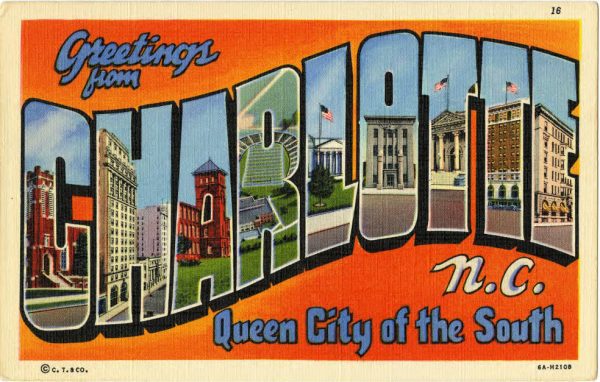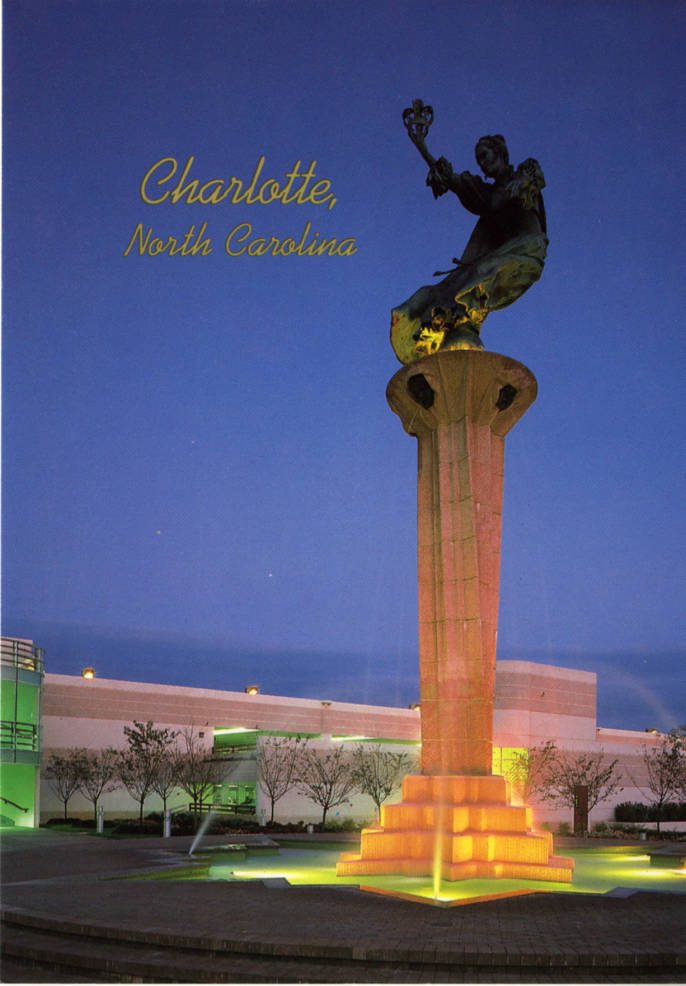Should Charlotte’s “brand” emerge organically or be something aspirational?

There was a stir in town a few weeks ago, when the new Charlotte Regional Business Alliance CEO, Janet LaBar, commented to the Charlotte Observer, “I think Charlotte doesn’t have a brand. That’s not necessarily, today, good or bad. That just means that’s an opportunity for us to actually create one.”
While LaBar’s comments are spot-on, there have been prior attempts at creating just such an identity. Those were recalled in commenters’ remarks online: The Charlotte Regional Visitors Authority’s “Charlotte’s Got A Lot” campaign; an “I (heart) Charlotte” campaign; and another campaign referring to the city as the “Second-Largest Banking Center in America.”

John Paul Galles.
None of those are particularly well-suited to attracting new businesses to this region now, however. A quick review of Charlotte’s brand as it has emerged from our history is somewhat helpful.
Native American tribes, including the Catawba, were the first known settlers in the Mecklenburg County region. The “uptown” area – the high point of the terrain at Trade and Tryon Streets – was a crossroads of trading. The Charlotte region was then developed first by a wave of Scots-Irish Presbyterian, then German, immigrants. They named the city Charlotte and the county Mecklenburg in homage to the German princess Sophie Charlotte of Mecklenburg-Strelitz, married to King George III.
Queen Charlotte and her crown are one of the city’s enduring identities: The crown remains a symbol of the city of Charlotte, aka the Queen City, and appears on street signs and city documents. The Queens Table commissioned sculptor Raymond Kaskey to construct a Queen Charlotte statute in 1990 to represent the city of Charlotte and its history, welcoming people from the CLT Airport. The compass rose she sits atop was emblematic of Charlotte as a crossroads.
The city was founded near a trail known as the Great Wagon Road that guided settlers from Pennsylvania, and it was established as a trading center before the discovery of gold in the late 1790s. Charlotte was a great location for assembling weapons in the Civil War, and then a great location to assemble thousands of army troops for World War I in 1917.
James Buchanan Duke, born into a family tobacco company, invented the first automated cigarette-making machine. He and his brother, Benjamin, also opened the a textile company in 1892.

A 1961 pamphlet billing Charlotte as the “Industrial and Distribution Center of the Carolinas.” Source: J. Murrey Atkins Library, UNC Charlotte digital archive.
More significantly, in 1904, Buck and his brother founded the Catawba Power Company, the precursor to what is now Duke Energy. Producing energy at a low-cost, the region became an attractive location for more textile companies relocating from New England states. The success of southern textile producers gave rise to the banking community—to finance, serve and protect the mills’ every monetary need.
The number and size of banks in Charlotte grew rapidly and the Federal Reserve established a branch in Charlotte to support that banking activity. In the latter half of the 20th century, Bank of America’s Hugh McColl and First Union’s (now Wells Fargo) Ed Crutchfield led the wave of national banks expanding across state lines throughout the United States, causing Charlotte to become known as the second-largest banking center in the U.S.
Eventurally, tobacco companies in much of North Caorlina wound down their manufacturing activity, and textile firms closed or moved their operations to places with less expensive labor and workforces. But the banking center identity worked – until the economic collapse of the American economy from 2008 to 2010, known as the Great Recession. Even the banks downsized or merged to recover from that economic debacle.

The Queen Charlotte statue at Charlotte Douglas International Airport. Source: J. Murrey Atkins Library, UNC Charlotte digital archive.
What emerged over the ensuing years of recovery were several attempts to revive the economy and our city’s identity. The Chamber promoted the region’s strengths for corporate headquarters; the Charlotte Regional Partnership marketed the region collectively as Charlotte USA; and a group of business and civic leaders coalesced under the rubric Global Vision Leaders Group, adopting a vision for the Charlotte region to become “A Global Hub of International Commerce.”
Taking stock of the region’s assets, the Global Vision Leaders Group set forth a plan to diversify and build on its critical location midway on the East Coast amidst dense population centers, with a well-developed network of highways and railways and one of the nation’s busiest airports – which, importantly, in the post-Panamax era, is in close proximity to the six major Southeast deep-water ports.
The Global Vision Leaders Group (and, as a cofounder, I may be slightly biased) reflected the region’s history as a trade crossroads, playing up its strategic location as both a global gateway for international companies seeking to engage and participate in the U.S. domestic economy, and a portal for U.S. companies seeking to engage the global economy. The vision also projected a city of diversity and inclusivity, providing jobs for upward mobility.
Ultimately, as regional leaders search for a new brand, the larger question is: Should Charlotte’s economic development brand, identity -whatever you want to call it – emerge organically out of what the city has already cultivated, or be something aspirational, setting the direction in which the region hopes to grow?
I feel strongly that this is a discussion that should be conducted across the entire region, including business leaders and residents, to accurately encompass the diverse interests within our growing, diversifying, aspirational region.
What is most important with any brand selected for marketing purposes is that the Charlotte region adopt an identity that resonates and proves to be true for those who live, work and play here.
John Paul Galles was the publisher of Greater Charlotte Biz, serving the Charlotte regional business community for 18 years. He was one of the co-founders of the Global Vision Leaders Group. He is currently a consultant to area businesses on strategic planning and communications. He can be reached at 704-576-0477 or jgalles@clt.biz.
John Paul Galles